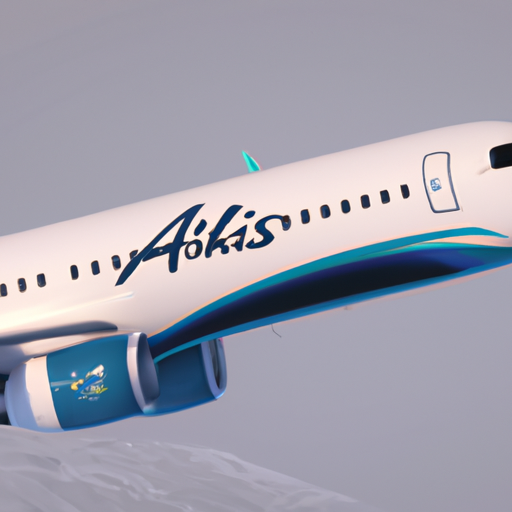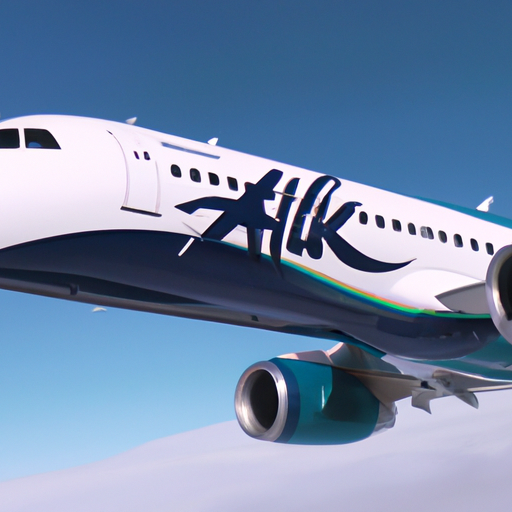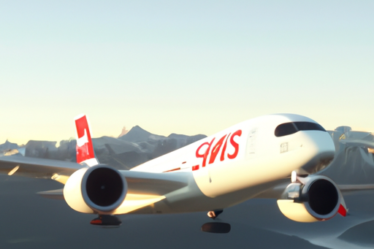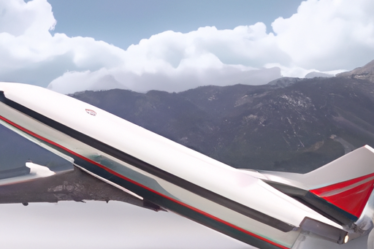
Benefits of Alaska Airlines’ Exclusive Boeing Fleet
Alaska Airlines recently announced its decision to phase out its Airbus A321neo aircraft and revert to an exclusive Boeing fleet. This move comes as part of the airline’s strategy to streamline its operations and enhance its customer experience. While the decision may seem surprising to some, there are several benefits to be gained from this transition.
One of the primary advantages of having an exclusive Boeing fleet is the increased operational efficiency. By standardizing its aircraft, Alaska Airlines can simplify its maintenance and training processes. With a single type of aircraft, the airline’s maintenance crews can become experts in handling and servicing Boeing planes, leading to faster turnaround times and reduced downtime. Additionally, having a consistent fleet allows for better resource allocation, as spare parts and equipment can be shared among the aircraft more effectively.
Another benefit of an exclusive Boeing fleet is the potential for cost savings. By eliminating the Airbus A321neo from its fleet, Alaska Airlines can reduce its operating expenses. This is because maintaining a mixed fleet requires additional resources, such as specialized training for pilots and crew members, as well as separate maintenance and support systems. By focusing solely on Boeing aircraft, the airline can optimize its operations and achieve economies of scale, resulting in lower costs in the long run.
Furthermore, an exclusive Boeing fleet can enhance the customer experience. Alaska Airlines has a strong reputation for its exceptional service, and this transition allows the airline to further improve its offerings. Passengers will benefit from a consistent onboard experience, as all Boeing aircraft will have the same cabin layout and amenities. This means that customers can expect the same level of comfort and convenience, regardless of the specific Boeing aircraft they are flying on. Additionally, having a standardized fleet enables the airline to better plan and allocate its resources, ensuring that flights are on time and disruptions are minimized.
In addition to operational efficiency and cost savings, an exclusive Boeing fleet also offers strategic advantages. Alaska Airlines has a long-standing partnership with Boeing, and this decision further strengthens their relationship. By exclusively using Boeing aircraft, the airline can leverage its partnership to influence future aircraft development and customization. This allows Alaska Airlines to have a say in the design and features of its future fleet, ensuring that it aligns with the airline’s specific needs and preferences.
In conclusion, Alaska Airlines’ decision to phase out its Airbus A321neo aircraft and revert to an exclusive Boeing fleet brings several benefits. The move enhances operational efficiency, reduces costs, improves the customer experience, and strengthens the airline’s strategic position. By standardizing its fleet, Alaska Airlines can optimize its operations, provide a consistent onboard experience, and leverage its partnership with Boeing. As the airline continues to prioritize its commitment to excellence, this transition marks another step towards delivering exceptional service to its passengers.
Impact of Alaska Airlines’ Decision on Airbus A321neos

Alaska Airlines recently made a significant decision that is set to have a major impact on their fleet. The airline has announced that they will be phasing out their Airbus A321neos and reverting back to an exclusive Boeing fleet. This decision has raised eyebrows in the aviation industry and has left many wondering about the reasons behind it.
One of the main reasons cited by Alaska Airlines for this decision is the desire to simplify their fleet. By exclusively using Boeing aircraft, the airline hopes to streamline their operations and reduce costs associated with maintenance and training. This move is in line with their long-term strategy of focusing on efficiency and profitability.
Another factor that played a role in this decision is the compatibility of the Boeing aircraft with Alaska Airlines’ current infrastructure. The airline already has an extensive network of maintenance facilities and trained personnel for Boeing aircraft. By sticking to one manufacturer, they can leverage their existing resources and expertise, resulting in smoother operations and improved customer service.
Additionally, Alaska Airlines has a long-standing relationship with Boeing, which has undoubtedly influenced their decision. The airline has been a loyal customer of Boeing for many years, and this move can be seen as a testament to their trust and confidence in the manufacturer. By maintaining a strong partnership with Boeing, Alaska Airlines can benefit from their ongoing support and collaboration.
The impact of this decision on Airbus is not to be underestimated. Losing a major customer like Alaska Airlines is undoubtedly a blow to the manufacturer. The A321neo is a popular aircraft in the industry, known for its fuel efficiency and range. With Alaska Airlines phasing out these planes, Airbus will need to find new customers to fill the void left by their departure.
However, it’s important to note that this decision does not reflect any shortcomings on the part of Airbus. Alaska Airlines has stated that they are pleased with the performance of the A321neo and that this move is purely a strategic decision. It’s simply a matter of aligning their fleet with their long-term goals and leveraging their existing resources.
For passengers, the impact of this decision may not be immediately noticeable. Alaska Airlines will continue to provide a high level of service and comfort, regardless of the aircraft manufacturer. However, it’s worth noting that the transition to an exclusive Boeing fleet may result in some changes to the routes and schedules offered by the airline. Passengers should stay informed and check for any updates or adjustments to their travel plans.
In conclusion, Alaska Airlines’ decision to phase out their Airbus A321neos and revert to an exclusive Boeing fleet is a strategic move aimed at simplifying their operations and leveraging their existing resources. While this decision may have an impact on Airbus, it does not reflect any shortcomings on their part. Passengers can expect the same level of service and comfort from Alaska Airlines, although some changes to routes and schedules may occur. Overall, this decision is a testament to Alaska Airlines’ commitment to efficiency and profitability, and their strong partnership with Boeing.
Future Plans for Alaska Airlines’ Fleet Expansion
Alaska Airlines has recently announced its plans to phase out the Airbus A321neo aircraft from its fleet, reverting back to an exclusive Boeing fleet. This decision comes as part of the airline’s future plans for fleet expansion and optimization.
The Airbus A321neo, a narrow-body aircraft, was initially introduced to Alaska Airlines’ fleet in 2017. It was seen as a promising addition, with its fuel efficiency and increased capacity compared to the Boeing 737 aircraft that the airline primarily operates. However, after careful evaluation and consideration, Alaska Airlines has decided to focus solely on Boeing aircraft going forward.
The decision to phase out the Airbus A321neo is driven by several factors. One of the main reasons is the airline’s desire to streamline its operations and maintenance processes. By operating a single aircraft type, Alaska Airlines can simplify its training programs for pilots and maintenance crews, leading to increased efficiency and cost savings.
Another factor influencing this decision is the airline’s long-standing partnership with Boeing. Alaska Airlines has a strong relationship with Boeing, and the two companies have worked closely together for many years. By reverting to an exclusive Boeing fleet, the airline can further strengthen this partnership and benefit from the synergies that come with it.
Additionally, Alaska Airlines believes that the Boeing 737 MAX aircraft, which is set to be reintroduced to service after a temporary grounding, will be a key component of its future fleet expansion. The airline has already placed orders for additional Boeing 737 MAX aircraft, and phasing out the Airbus A321neo will allow for a more seamless integration of these new planes into its fleet.
While the decision to phase out the Airbus A321neo may come as a surprise to some, Alaska Airlines is confident that it is the right move for the airline’s long-term growth and success. The airline remains committed to providing its passengers with a safe, reliable, and comfortable flying experience, and believes that an exclusive Boeing fleet will help achieve this goal.
Passengers can expect a smooth transition as Alaska Airlines phases out the Airbus A321neo. The airline will work closely with its employees, partners, and customers to ensure a seamless experience throughout the process. Passengers who have already booked flights on the Airbus A321neo will be reaccommodated on other aircraft types, and the airline will make every effort to minimize any inconvenience caused.
In conclusion, Alaska Airlines’ decision to phase out the Airbus A321neo and revert to an exclusive Boeing fleet is part of the airline’s future plans for fleet expansion and optimization. By operating a single aircraft type, the airline aims to streamline its operations, strengthen its partnership with Boeing, and integrate the Boeing 737 MAX aircraft into its fleet. Passengers can expect a smooth transition, and the airline remains committed to providing a safe and comfortable flying experience.


